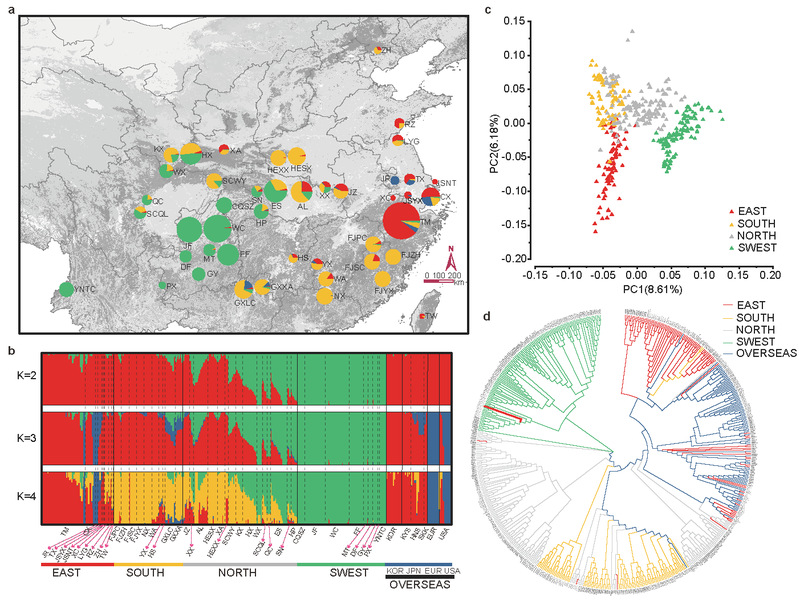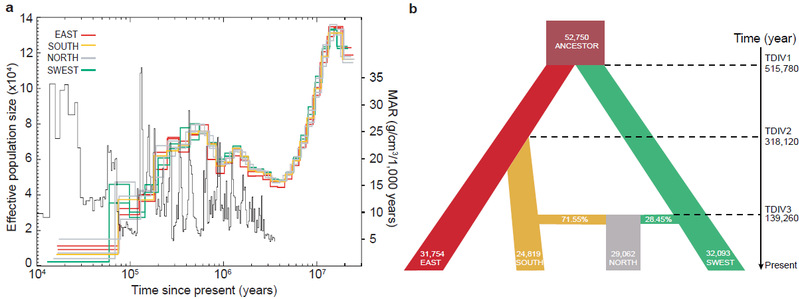Title: Resequencing 545 ginkgo genomes across the world reveals the evolutionary history of the living fossil
Yun-Peng Zhao, Guangyi Fan, Ping-Ping Yin, Shuai Sun, Ning Li, Xiaoning Hong, Gang Hu, He Zhang, Fu-Min Zhang, Jing-Dan Han, Ya-Jun Hao, Qiwu Xu, Xianwei Yang, Wenjie Xia, Wenbin Chen, Han-Yang Lin, Rui Zhang, Jiang Chen, Xiao-Ming Zheng, Simon Ming-Yuen Lee, Joongku Lee, Koichi Uehara, Jian Wang, Huanming Yang, Cheng-Xin Fu, Xin Liu, Xun Xu & Song Ge
Abstract
As Charles Darwin anticipated, living fossils provide excellent opportunities to study evolutionary questions related to extinction, competition, and adaptation. Ginkgo (Ginkgo biloba L.) is one of the oldest living plants and a fascinating example of how people have saved a species from extinction and assisted its resurgence. By resequencing 545 genomes of ginkgo trees sampled from 51 populations across the world, we identify three refugia in China and detect multiple cycles of population expansion and reduction along with glacial admixture between relict populations in the southwestern and southern refugia. We demonstrate multiple anthropogenic introductions of ginkgo from eastern China into different continents. Further analyses reveal bioclimatic variables that have affected the geographic distribution of ginkgo and the role of natural selection in ginkgo’s adaptation and resilience. These investigations provide insights into the evolutionary history of ginkgo trees and valuable genomic resources for further addressing various questions involving living fossil species.
Link:https://www.nature.com/articles/s41467-019-12133-5







